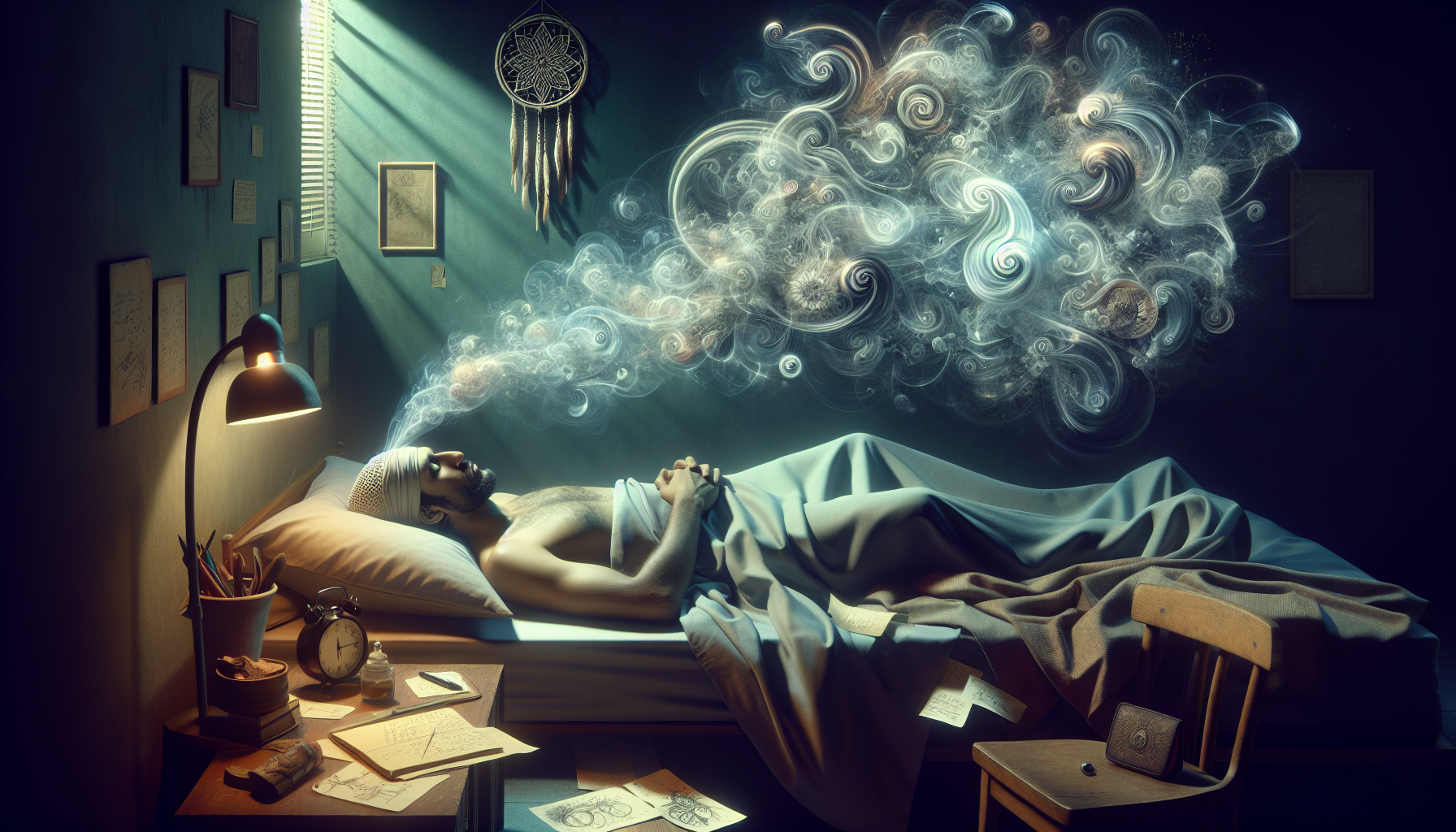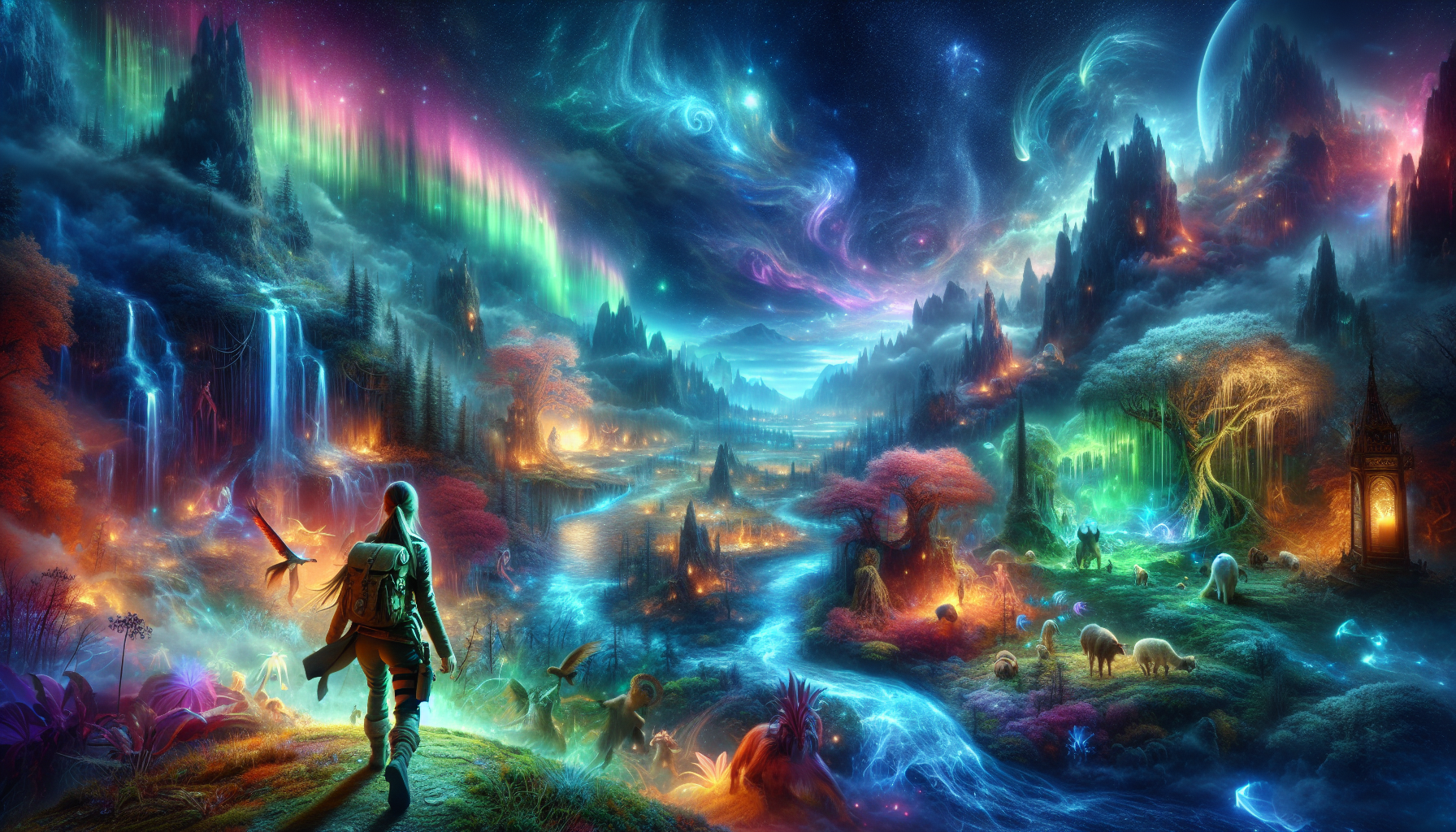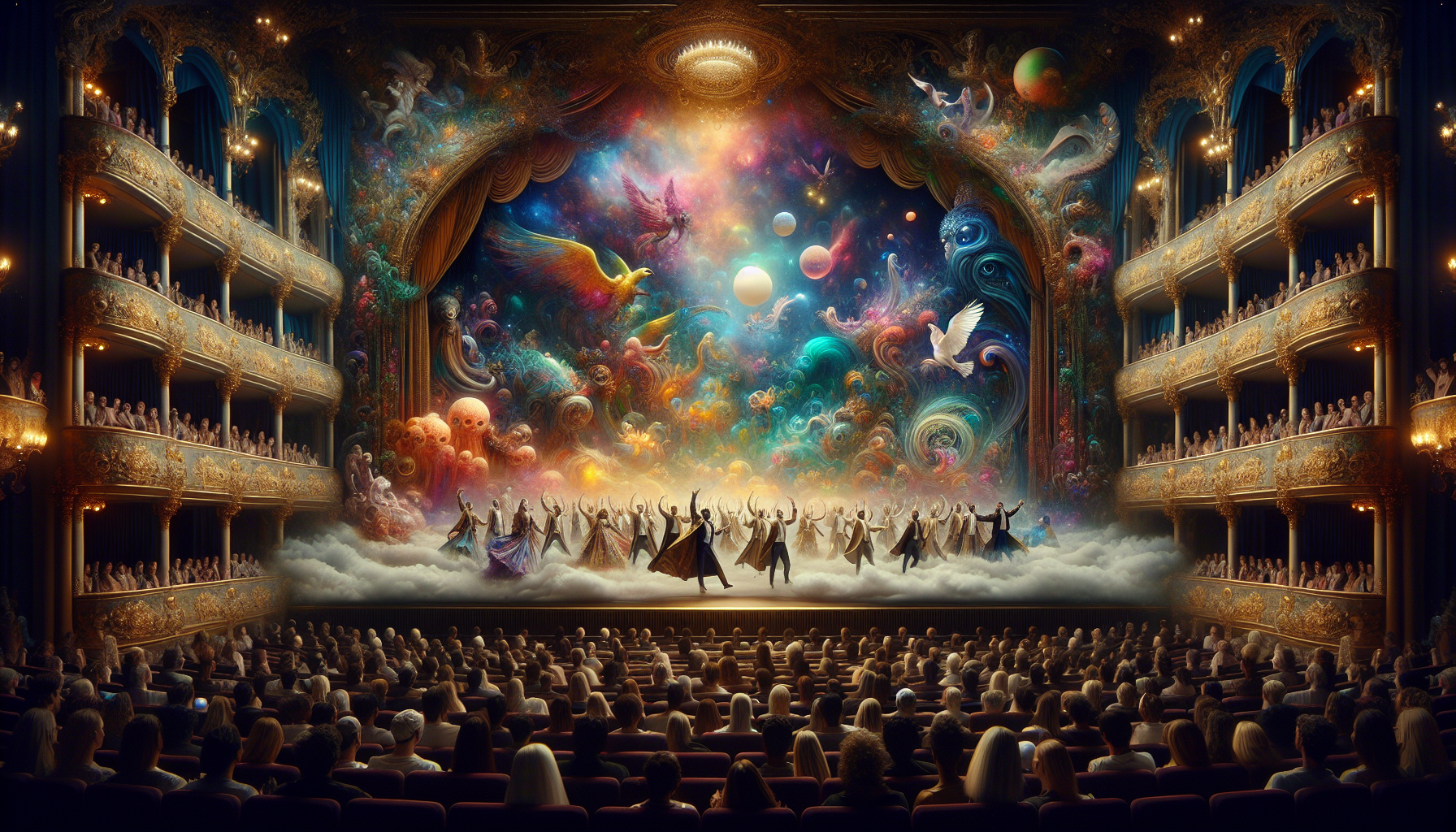Dreams have long fascinated humanity, serving as mysterious nocturnal narratives that transport us to realms where logic often gives way to fantasy. From ancient civilizations interpreting dreams as divine messages to modern psychology probing their deeper meanings, dreams have been a source of intrigue and speculation. But what if these ephemeral episodes are more than just random neural firings or whimsical flights of imagination? What if they hold the key to unlocking emotions we’ve buried deep within ourselves, emotions we’re often unaware of in our waking lives? In this thought-provoking exploration, we delve into the compelling question: Can dreams expose hidden emotions? Join us as we journey through the realms of the subconscious, unearthing the intricate relationship between dreaming and repressed feelings. 🌌
At the heart of this exploration lies the notion that our dreams may serve as a mirror to our innermost selves, reflecting desires, fears, and memories that our conscious mind might find too overwhelming to confront directly. This concept, rooted in the work of pioneers like Sigmund Freud and Carl Jung, suggests that dreams offer a window into the unconscious mind—a realm where unresolved emotions and repressed thoughts reside. We’ll explore the theories these great thinkers proposed and examine how contemporary psychology builds upon their foundations, offering new insights into the significance of dreams. Along the way, we’ll unravel how dreams can manifest emotions we might not even know we possess, offering clues to unresolved issues and guiding us toward emotional healing and self-discovery.
In this intriguing analysis, we’ll also consider the latest scientific research that bridges the gap between age-old theories and modern empirical studies. You’ll discover how neuroscientists and psychologists are harnessing technology to decode the language of dreams, revealing patterns that might indicate emotional distress or unresolved conflicts. From the symbolic interpretation of dream imagery to understanding how recurring dreams might signal deep-seated issues, we’ll uncover the potential of dreams as tools for introspection and emotional growth. So, get ready to embark on a journey through the enigmatic world of dreams—where the subconscious mind speaks, emotions are unveiled, and the truths of our inner lives are waiting to be discovered. 🌠
The Mysterious World of Dreams
Dreams have fascinated humans for centuries. They are an enigmatic aspect of the human experience, often filled with bizarre imagery and seemingly nonsensical narratives. Yet, they may hold the key to understanding our innermost thoughts and emotions. Dreams occur during the REM (Rapid Eye Movement) stage of sleep, where brain activity is high, and vivid dreams often take place. This mysterious world offers a glimpse into the subconscious, potentially revealing hidden emotions and unprocessed feelings that are not addressed during waking hours.
Freud, the father of psychoanalysis, suggested that dreams are the “royal road to the unconscious.” He believed that dreams contain both manifest content (the literal storyline) and latent content (the hidden psychological meaning). Freud argued that by analyzing dreams, we can gain insight into the repressed emotions that influence our behavior. Modern psychologists continue to explore this connection, suggesting that dreams may serve as a form of emotional regulation, processing feelings that are difficult to face in our conscious state.
Research has shown that dreams can be a reflection of our emotional states. When we’re stressed or anxious, for instance, our dreams might mirror these feelings, often through symbolic representations. Understanding this link can be crucial in addressing emotional distress and mental health issues. The notion that dreams can expose hidden emotions is intriguing, inviting us to explore the depths of our minds and the feelings we might not even be aware of.
The Science Behind Dreaming
While the exact purpose of dreaming is still a subject of scientific investigation, numerous theories have emerged to explain why we dream. One prominent theory is that dreams serve to consolidate memories. This idea suggests that during sleep, the brain processes and organizes the information gathered throughout the day. Dreams, then, may be a byproduct of this process, incorporating elements of our waking lives into dream scenarios.
Another theory posits that dreams help in problem-solving. Often, people wake up with solutions to problems that eluded them during the day. This phenomenon indicates that dreams may play a role in creative thinking and resolving complex issues. Some researchers argue that the bizarre nature of dreams may even encourage the brain to think outside the box, fostering innovative ideas.
Furthermore, the emotional regulation hypothesis suggests that dreams help process emotions. This theory aligns with the idea that dreams can reveal hidden feelings, as they allow us to work through emotional conflicts in a safe, subconscious space. By simulating experiences and emotions, dreams might help us better prepare for future emotional challenges, contributing to emotional resilience.
Dreams and Repressed Feelings: Unveiling the Connection
The connection between dreams and repressed feelings is a rich area of exploration. Freud’s theory of dream interpretation laid the groundwork for understanding this relationship, suggesting that repressed desires and emotions often surface in dreams. The concept of repression, a defense mechanism where uncomfortable thoughts are pushed out of conscious awareness, indicates that these thoughts might still influence behavior and well-being.
Dreams offer a window into these repressed elements, often through symbols and metaphors. For example, dreaming of losing teeth might symbolize a fear of losing control or power, while flying could represent a desire for freedom. These symbolic interpretations provide clues about the emotions we might not be addressing in our waking life.
Recent studies support the notion that dreams can reflect emotional states, especially those that are repressed or unacknowledged. By paying attention to dream themes and patterns, individuals might uncover emotions they have not consciously recognized. This awareness can lead to personal growth and healing, offering a deeper understanding of oneself.
Table: Common Dream Symbols and Their Possible Interpretations
| Dream Symbol | Possible Interpretation |
|---|---|
| Falling | Fear of failure or loss of control |
| Flying | Desire for freedom or escape |
| Teeth falling out | Anxiety about appearance or powerlessness |
| Being chased | Avoidance of a problem or fear |
| Water | Emotional state or purification |
Dream Analysis: A Pathway to Self-Discovery
Analyzing dreams can be a powerful tool for self-discovery, revealing aspects of ourselves that are hidden from our conscious awareness. Many therapists use dream analysis in psychotherapy to help individuals understand their subconscious mind. This process involves exploring the symbols and emotions present in dreams, uncovering the layers of meaning that might be influencing an individual’s thoughts and behaviors.
The practice of keeping a dream journal is often recommended for those interested in exploring their dreams. By recording dreams upon waking, individuals can identify recurring themes and symbols, offering insights into their emotional landscape. This process not only enhances self-awareness but also encourages a deeper connection with one’s inner world.
Moreover, discussing dreams in therapy can facilitate healing. By bringing subconscious thoughts to the surface, individuals can address unresolved issues and process emotions that may be hindering their well-being. This approach aligns with the therapeutic goal of integrating the conscious and unconscious parts of the psyche, promoting emotional balance and personal growth.
Video Recommendation
For a visual exploration of how dreams might reveal hidden emotions, watch this engaging video titled “The Science of Dreams” from the channel BrainCraft:
Conclusion: Embracing the Power of Dreams

Conclusion: Uncover the Truth: Can Dreams Expose Hidden Emotions?
In our exploration of the complex realm of dreams and their potential to reveal hidden emotions, we have traversed a fascinating intersection of psychology, neuroscience, and personal introspection. Through this analysis, we’ve delved into the mechanisms of dreaming, the theories that attempt to explain their origins and functions, and the rich tapestry of emotions that often manifest in our nocturnal narratives.
Firstly, we revisited the foundational theories of dream interpretation, from Sigmund Freud’s seminal ideas on dreams as windows to the unconscious mind, revealing repressed desires and emotions, to Carl Jung’s concept of dreams as a bridge to the collective unconscious. These early theories laid the groundwork for understanding how dreams might reflect our innermost feelings.
Moreover, we examined contemporary research in neuroscience that highlights the brain’s activity during the REM (Rapid Eye Movement) phase of sleep, where dreams are most vivid. Studies suggest that during REM sleep, the brain processes emotional experiences, potentially allowing us to work through unresolved emotions and stressors from our waking life. Link to a study on REM sleep and emotions.
In addition to scientific perspectives, we explored anecdotal evidence and personal accounts of individuals who have found meaning and emotional clarity through their dreams. These narratives underscore the potential of dreams to act as mirrors to our subconscious, revealing fears, anxieties, desires, and unresolved conflicts that might otherwise remain hidden.
The cultural and historical context of dreams was another significant facet of our discussion. Across various cultures and eras, dreams have been regarded as omens, spiritual messages, or gateways to alternate realities, emphasizing their perceived power in human experience.
Importantly, we considered the practical applications of dream analysis in therapeutic settings. Many therapists integrate dream interpretation into their practices, helping individuals uncover underlying emotions and gain insights into their mental health. This approach highlights the therapeutic potential of dreams in promoting emotional well-being and self-awareness. Link to a source on dream therapy.
As we draw this exploration to a close, the importance of understanding dreams as a tool for emotional insight cannot be overstated. While dreams may not always provide clear answers, they offer a unique lens through which we can examine our subconscious mind, offering clues about our emotional state and inner world. Recognizing patterns in dreams and emotions can be a powerful step toward emotional healing and personal growth.
In conclusion, the connection between dreaming and repressed feelings is a captivating subject that bridges science and personal exploration. By paying attention to our dreams, we open a door to better understanding our hidden emotions and, consequently, ourselves. As you reflect on your own dreams, consider keeping a dream journal to track recurring themes or emotions, as this practice can enhance your self-awareness and emotional intelligence.
We encourage you to share your thoughts on this topic. Have you had dreams that revealed hidden emotions or provided insight into your waking life? Your experiences and reflections can enrich this ongoing conversation, so feel free to comment below. Additionally, if you found this analysis enlightening, consider sharing it with others who might benefit from exploring the mysterious world of dreams. 🌙✨
Together, let’s continue to uncover the truth and embrace the wisdom our dreams have to offer.
- Keep a dream journal to track recurring themes.
- Discuss dreams with a therapist for deeper insights.
- Reflect on dream symbols and their personal significance.
- Explore resources such as videos and books for further learning.
Gabriel is a visual storyteller and dream archivist whose work explores the fragile boundary between memory and imagination. Through layered visuals and symbolic design, Gabriel captures the fleeting essence of dreams — those strange, beautiful, and sometimes haunting fragments that drift through sleep and linger in waking thought.
His creative journey is rooted in a deep fascination with the subconscious and the imagery it conjures. From half-remembered landscapes to recurring symbols and surreal encounters, each piece Gabriel brings to life becomes a portal into the inner archive — where time distorts, meanings shift, and personal mythology takes form.
With a background in handcrafted artistry and visual composition, Gabriel merges intuition with intention. His work doesn’t merely depict dreams; it preserves them, translating ephemeral moments into tangible expressions that evoke emotion, curiosity, and quiet revelation. Each visual is both a record and an invitation to explore the rich terrain of inner life.
Through illustrated dream journals, symbolic studies, and visual essays, Gabriel invites others to connect with the poetic architecture of their subconscious landscapes. His art becomes a mirror — not only of what we see at night, but of what we carry deep within.
His work is a tribute to:
-
The fragile beauty of forgotten dreams
-
The language of symbols in the subconscious mind
-
The inner worlds we visit but rarely name
Whether you’re a lucid dreamer, a seeker of hidden meanings, or someone fascinated by the mystery of sleep-born stories, Gabriel welcomes you to step into a space where dreams are not lost — they are archived, one vision, one sketch, one silent narrative at a time.





